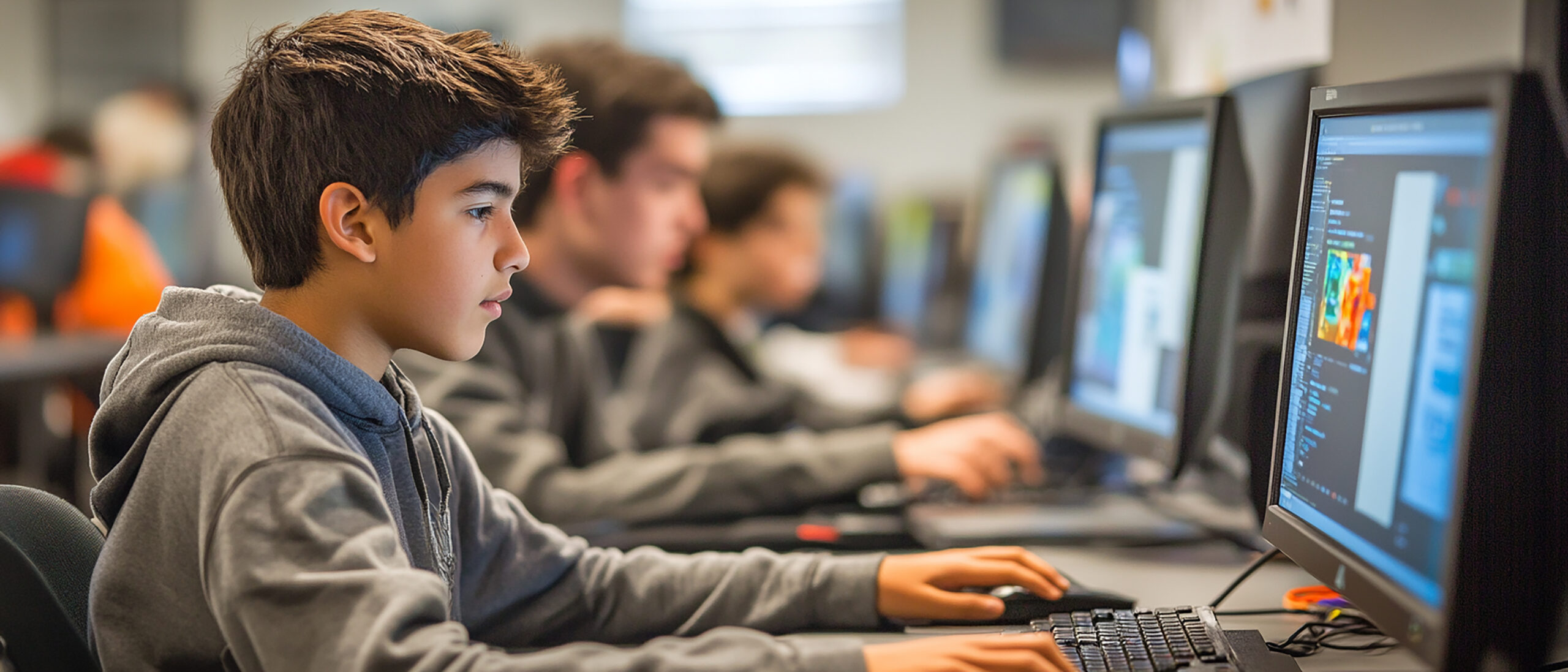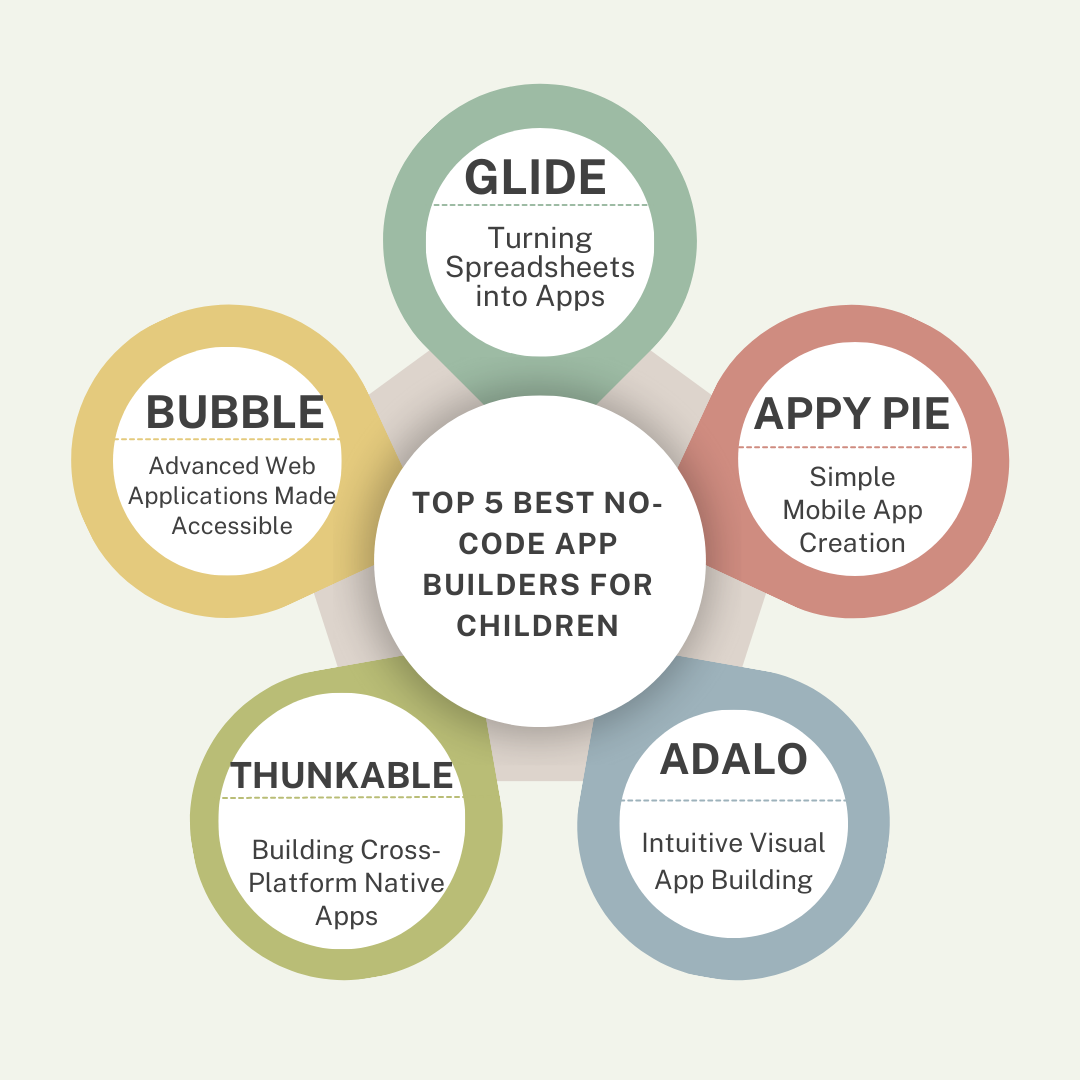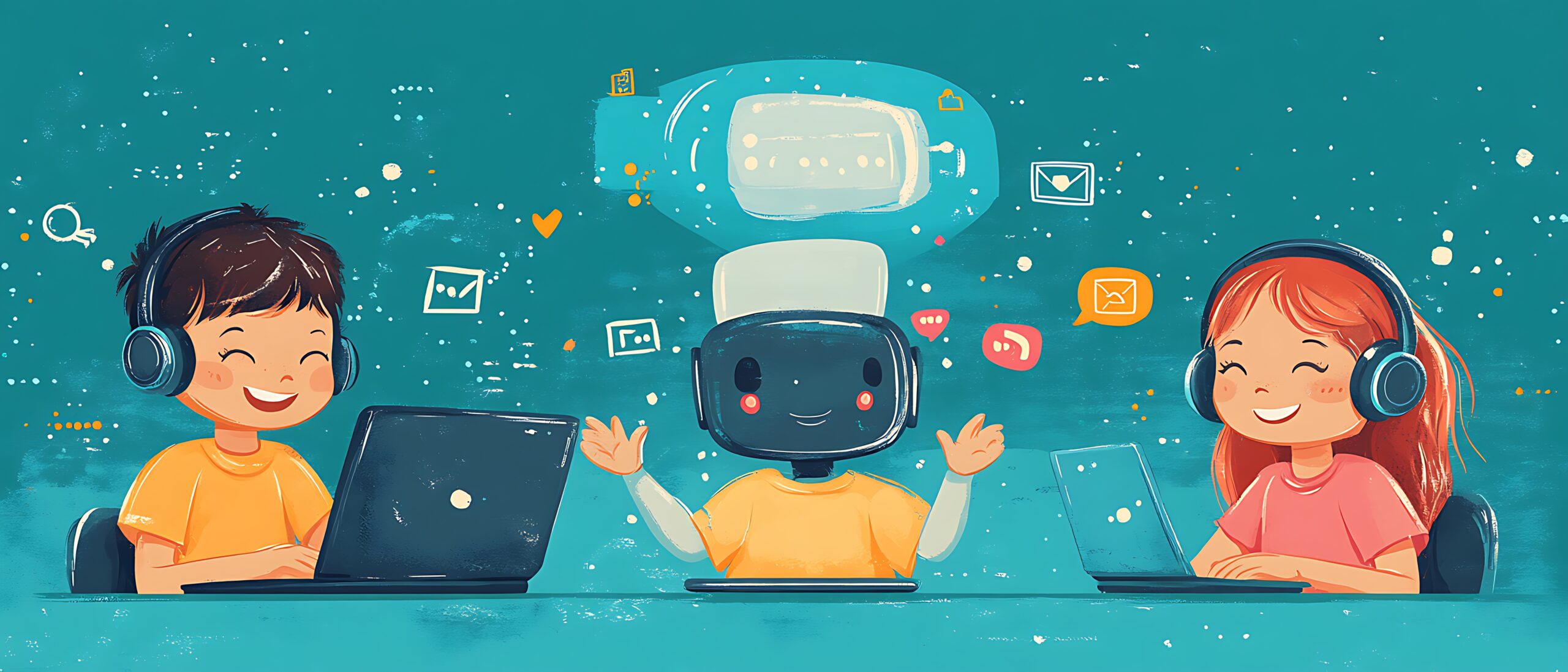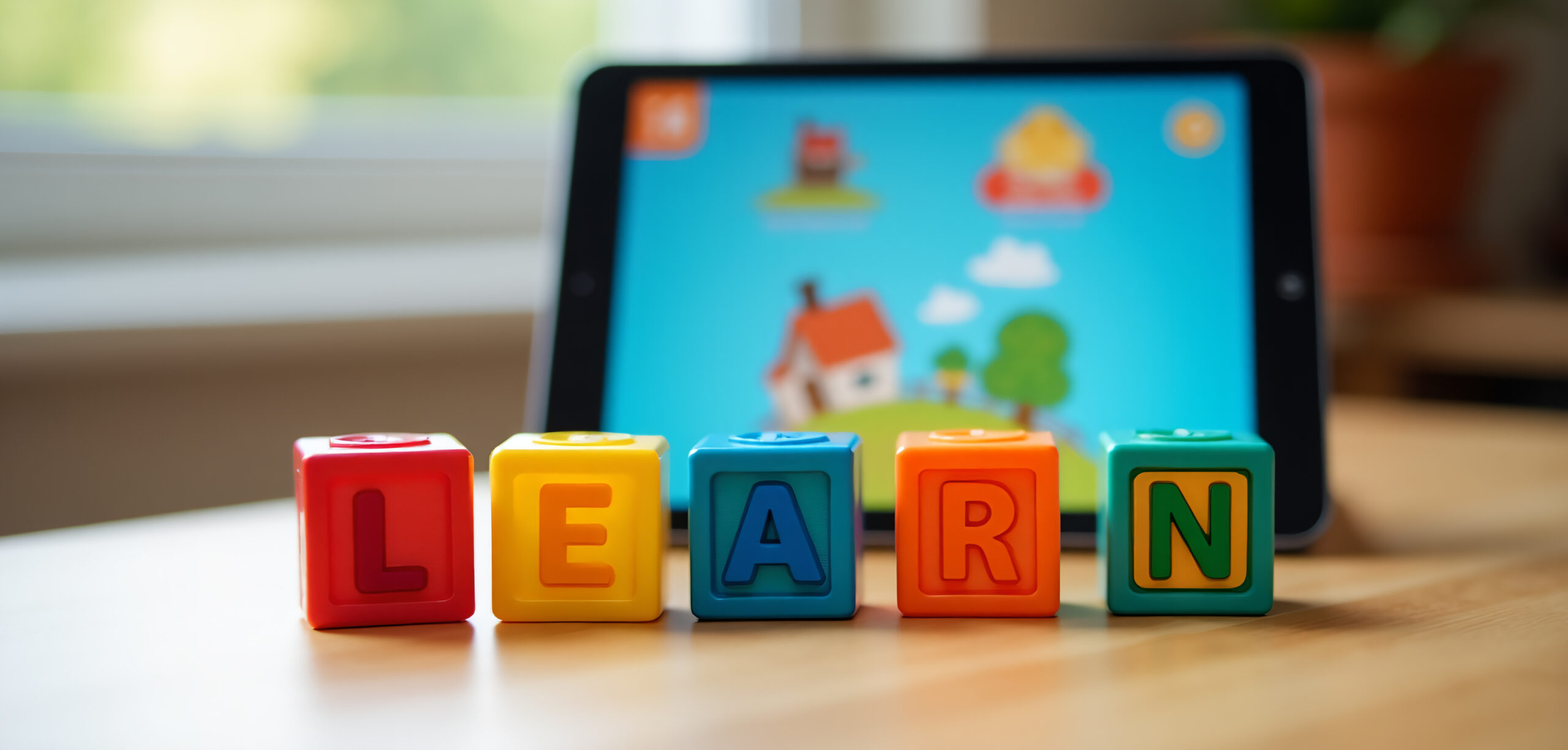Building mobile apps without coding is surprisingly easy in 2026, and these platforms have become a real asset for young learners itching to turn their ideas into something tangible. No-code app builders for kids blend hands-on visual tools with learning elements, teaching logical thinking and problem-solving while making real apps – pretty cool if you ask me.
The best no-code app builders for kids in 2026 focus on drag-and-drop simplicity, educational content, and safe learning environments that make app development both fun and instructive. These platforms have come a long way, evolving from basic tools into systems that can handle pretty complex app features, all while staying appropriate for younger users.
Choosing the right platform means thinking about what really helps kids learn and grow. There’s a range here, from super simple visual builders to AI-powered tools that can keep up as a child’s skills improve. Each one has its own take on teaching core programming concepts through hands-on app creation.
What Are No-Code App Builders and Why Are They Great for Kids?

No-code app builders toss out the need for traditional programming and instead give you a visual interface with drag-and-drop parts. Kids get to turn their ideas into working apps and, along the way, pick up some valuable digital skills.
Definition of No-Code App Builders
No-code app builders let people create apps without writing code. Instead, you get a visual environment where you drag and drop ready-made components to build your app.
The platforms feel a lot like stacking blocks or fitting puzzle pieces together. You pick things like buttons, images, text boxes, and forms from a menu, then drag them onto your workspace to design how your app looks and works.
Most of these tools come with templates and step-by-step workflows that walk you through building an app. Many show you real-time previews, so you can see what’s happening as you make changes. That instant feedback really helps users see how their design choices affect the final product.
Behind the scenes, the platform handles all the tricky coding. When you connect components or set up how things interact, the no-code platform quietly generates the necessary code so everything just works.
Benefits for Young App Creators
No-code platforms give kids an easy way into app development and tech creation. Young creators can focus on solving problems and thinking creatively, instead of getting bogged down in tricky programming languages.
These tools help kids develop logical thinking skills because they have to plan out how their app will work. They learn to break big ideas into smaller, manageable bits – a skill that’s useful way beyond just tech.
No-code app makers build confidence by letting children create working apps quickly. That instant success motivates them to keep exploring and tinkering with technology. They see their ideas come to life, minus the headaches of syntax errors or debugging nightmares.
The visual approach really clicks for kids who don’t love text-heavy programming. Drag-and-drop interfaces and visual elements make app building a lot more approachable for different learning styles.
Learning through no-code tools nurtures the same problem-solving and logical reasoning skills that come from coding itself — in fact, there are plenty of reasons your child should start learning to code early.
How No-Code Tools Make App Building Accessible
No-code platforms clear away the usual roadblocks that keep kids from building apps. The visual approach means you don’t have to memorise programming syntax or wrestle with complicated code.
Most no-code app builders come with big libraries of ready-made components and templates. Kids can start with a template and tweak it to fit their ideas, so there’s structure but still plenty of room for creativity.
Platforms usually offer tutorials and guided projects aimed at beginners. Interactive help and community support make it much easier for young users to get unstuck and try new things.
Since many no-code tools work right in your browser, there’s no need for fancy software or complicated setups. Kids can work on their projects at school, at home, or wherever there’s internet. The streamlined workflows mean they can actually finish projects, which keeps them interested and motivated.
Key Features to Look for in No-Code App Builders for Kids

Parents and teachers need specific features when helping kids create apps. The most important things? Easy drag-and-drop functionality, visual design tools that make sense for kids, customizable templates, and strong security.
Drag-and-Drop Functionality Explained
A drag-and-drop editor is the backbone of any decent no-code platform for kids. This lets creators just click and move stuff around, no coding required.
The drag-and-drop interface should have ready-to-go components like buttons, images, text boxes, and interactive bits. You want to be able to place things exactly where you want them.
Key drag-and-drop features include:
- Visual element positioning
- Real-time previews
- Component property editing
- Layer management
Good platforms update the app instantly as you make changes. That way, kids see right away how their app will look to users.
The interface should make it easy to add things like audio, video, and images, no tech headaches, just drop them in.
Child-Friendly Visual Editors
Visual editors for kids’ apps need to be simple but still powerful. The interface should be friendly, not intimidating, with controls that make sense even if you’re not a tech whiz.
Editors aimed at kids should have colorful, easy-to-understand controls. Clear icons and labels beat confusing jargon every time.
It should be quick to test ideas out. Parents and teachers often want to try a few versions before finding what works for their age group.
Must-have visual editor features:
- Big, clear interface elements
- Color-coded sections
- Simple menus
- Preview modes for different devices
Managing space on the screen matters a lot, especially for small hands and developing motor skills. Editors should have grids and alignment guides to help keep things tidy.
Templates, Components, and Customisation
Pre-built templates save a ton of time and help keep designs age-appropriate. The best platforms offer templates for learning, storytelling, and interactive activities.
Template categories should include:
- Educational quizzes
- Interactive storybooks
- Learning games
- Creative activities
Components need to fit kids’ developmental stages. Buttons should be easy to tap, fonts must be readable, and navigation should be obvious.
Customisation options let creators tweak templates while keeping things kid-friendly. That means changing colors, fonts, and layouts as needed.
The platform should offer education-focused components like progress trackers, rewards, and parental controls – stuff you just don’t see in generic app builders.
Security and Safety Considerations
COPPA compliance is the bare minimum for any kids’ app platform. The Children’s Online Privacy Protection Act sets rules for handling data from users under 13.
Platforms need built-in privacy controls that limit what data gets collected. That means clear privacy policies, restrictions on personal info, and safe data storage.
Parental gate features are a must. These stop kids from making purchases or finding stuff they shouldn’t.
Key security features:
- Age verification
- Purchase confirmation gates
- Content filtering
- Secure user authentication
If you’re targeting kids in Europe, GDPR-K compliance is non-negotiable. Platforms should help you meet those requirements, too.
Ads in kids’ apps need special handling. Platforms should offer child-safe advertising or let you go ad-free entirely.
The Top 5 Best No-Code App Builders for Children in 2026
These no-code app builders come with kid-friendly interfaces and drag-and-drop tools, so making mobile or web apps is totally doable for young creators. Each one brings something different, from spreadsheet-based apps to more advanced web tools.

Glide: Turning Spreadsheets into Apps
Glide is a great pick for young app builders because it turns Google Sheets into real mobile apps. Kids can organize data in a spreadsheet and, bam! It becomes an app. The learning curve is gentle, and the process feels familiar.
Children can build things like directories, simple databases, or project trackers without worrying about code. Glide automatically creates nice-looking interfaces from your spreadsheet, so kids can focus on what goes in the app, not how it works under the hood.
Key features for young builders:
- Real-time sync between sheets and apps
- Pre-built templates for common app types
- Easy sharing with family and friends
The editor is straightforward. Kids can change colors, layouts, and components with simple menus. Updates to the spreadsheet show up in the app right away, which keeps them interested.
Glide’s free plan is generous enough for most school projects or home experiments, so it’s accessible for families and educators.
Appy Pie: Simple Mobile App Creation
Appy Pie stands out for its AI-powered tools that make building native mobile apps easier than ever. Kids can just describe what they want in plain English, and the AI gets things started for them.
The drag-and-drop interface skips the hard stuff. Kids can add photo galleries, contact forms, and even tie in social media with just a few clicks.
Benefits for young developers:
- Lots of templates for games, utilities, and learning apps
- Step-by-step publishing help for app stores
- Integrates with services like YouTube and Instagram
You can build for both Android and iOS in the same place. Kids can instantly test what they’ve made, which is super satisfying and keeps them motivated.
Schools often go for Appy Pie because its tutorials and documentation are actually written with kids in mind.
Adalo: Intuitive Visual App Building
Adalo is all about making native mobile apps with slick interfaces that kids can design visually. The component-based setup helps young builders grasp how apps are structured, all through drag-and-drop.
Kids can make pretty complex apps with their own databases, user logins, and interactive features. The database editor is visual, so they don’t have to deal with code to understand how data connects.
Standout features include:
- Native app publishing to major app stores
- Marketplace full of pre-built components
- Testing on real devices
Adalo’s design process is all about visual feedback. Kids see results immediately when they add or change things, making the whole experience interactive and fun.
The community features let young creators share projects and learn from each other, which is great for collaborative learning and ongoing discovery.
Thunkable: Building Cross-Platform Native Apps
Thunkable uses a block-based system that teaches basic coding ideas but keeps things approachable for kids. The colored blocks snap together, a lot like what you see in educational programming tools.
Kids can make apps that run on both Android and iOS. The live testing feature means they can see their apps working on a real device right away.
Educational advantages:
- Block-based logic similar to Scratch
- Live testing on devices
- Connects with sensors and device features
Thunkable bridges visual programming and traditional coding. Kids learn about loops, variables, and conditions by playing with visual blocks, not by typing code.
The platform works especially well in classrooms, with lesson plans and teacher resources that support structured learning.
Bubble: Advanced Web Applications Made Accessible
Bubble is the most advanced option here and makes sense for older kids ready to try building real web apps. It offers powerful database tools and lets you set up complex workflows, all through a visual interface.
It’s powerful, but Bubble stays approachable thanks to a huge library of tutorials and a strong community. Kids can start with something simple and work their way up as their skills grow.
Advanced capabilities include:
- Custom database design and management
- API integrations
- User authentication and permissions
Since it’s a web app builder, kids can make apps that run anywhere with a browser. That removes compatibility headaches and teaches them about web-based software.
Bubble’s plugin marketplace makes it easy to add things like payments, maps, or social features—no coding required, just pick what you need.
AI and the Future of No-Code App Development for Kids

Artificial intelligence is shaking up how kids get into app development, turning what used to be complicated programming into something much more approachable. These days, AI-powered platforms break down old barriers and toss in features that actually adapt to how each young learner works.
How AI No-Code Builders Are Transforming Learning
AI-driven no-code platforms are flipping the script on how kids pick up app development. These tools rely on machine learning to suggest features, fill in code structures, and offer real-time nudges based on what a child wants to build.
Intelligent Design Assistance jumps in to help young creators by automatically recommending layout tweaks or features that make sense for their project. Say a kid starts building a game app – AI picks up on that and throws out templates, sound effects, and interactive bits that fit the vibe.
Adaptive Learning Paths shift the difficulty up or down depending on how quickly someone is catching on. The AI watches how kids handle new ideas and tweaks the complexity of tools as they go.
Automated Code Generation lets kids drag and drop stuff, while AI quietly turns those visual moves into a real, working app. No need to sweat the technical details behind the curtain.
Platforms like Thunkable and MIT’s App Inventor now weave in AI that predicts what young developers might want to try next, making the creative process a lot more fun and less intimidating. Platforms like Glide and Thunkable give kids a playful way to understand app logic — skills that echo the same foundations discussed in Why Coding for Kids Matters when building future-ready skills
Emerging Trends in Visual Development
Visual development tools just keep getting smarter, with AI making drag-and-drop interfaces way more powerful. Kids can build surprisingly complex apps using blocks that snap together and optimize themselves without much fuss.
Smart Block Connections save a lot of headaches by stopping incompatible elements from linking up. AI checks the logic flow and flags problems before they trip anyone up.
Voice-to-Visual Programming lets kids talk through their app ideas, and AI turns that speech into the right blocks. This approach opens the door for kids who struggle with more traditional interfaces.
Predictive Asset Libraries use AI to toss out images, sounds, and animations that fit the project. Building a nature app? The system might instantly suggest wildlife photos or ambient forest sounds.
All these upgrades are making ai no-code app builders more approachable and, honestly, a lot more fun. Kids have more room to experiment thanks to upgraded visual development tools.
Frequently Asked Questions
Parents and teachers usually have a bunch of questions about picking the right no-code platforms for kids – stuff like safety, educational value, and making sure the features fit the age group. These things matter if you want kids to be creative but still keep them protected as they learn the basics of programming.
-
What features should one look for in a child-friendly no-code app builder in 2026?
Look for no-code platforms with interfaces that are easy to use – big, colorful buttons, lots of visuals, and language that makes sense to kids. Step-by-step tutorials should walk kids through building their first apps without feeling lost.
Templates and pre-made components help kids dive in quickly, so they’re not staring at a blank screen. These should cover popular app types like games, stories, and simple tools that actually interest kids.
Letting kids collaborate in real time is a big plus, and teachers should be able to keep an eye on things. Built-in version control helps avoid those “oops, I deleted everything” moments.
Offline support really matters in classrooms where the internet isn’t always reliable. Kids should be able to keep working and sync up once they’re back online.
-
Which no-code platforms are considered most educational for young learners?
MIT’s Scratch is still the go-to for teaching kids programming logic with visual blocks. It covers all the basics – loops, conditionals, variables – while kids make stories and games that actually hold their attention.
Kodable gets kids as young as five thinking computationally. The games introduce programming concepts through puzzles, easing them into coding without making it feel like schoolwork.
Tynker stands out with lessons that match up to computing standards, offering both block-based and text-based coding. Kids can start with visuals and move to real code as they get the hang of it.
App Inventor by MIT lets kids build actual mobile apps with blocks, bridging the gap between learning concepts and making something they can show off to family or friends.
-
How do no-code app builders for kids integrate with the current school curricula?
Most educational no-code platforms line up with national computing curricula, focusing on algorithmic thinking and problem-solving. They cover key stage requirements for understanding digital systems and creating digital content.
Teachers get access to lesson plans and rubrics that tie directly to curriculum standards. Platforms like Tynker and Code.org lay out progression paths that show how activities hit specific learning goals.
Integration with Google Classroom or Microsoft Teams lets teachers assign projects and track progress without jumping through hoops. Students can submit their finished apps right through these familiar platforms.
Kids can make apps for science, math, or even humanities. Maybe they build a history quiz or a calculator for math homework, the possibilities are wide open!
-
Are there any age-specific no-code app builders tailored for various stages of child development?
ScratchJr aims at kids aged 5-7, sticking to simple drag-and-drop programming and focusing on storytelling and animation. The interface relies on pictures so even pre-readers can jump in.
Scratch itself works for ages 8-16, introducing more advanced programming ideas while keeping things visual. Kids get to experiment with variables, functions, and event-driven projects that actually hold their interest.
Alice brings 3D animation and storytelling to kids 10 and up. It introduces object-oriented programming through character-driven stories that tend to click with middle schoolers.
Thunkable is geared toward teens (13-18) who want to build real mobile apps. It brings in more advanced ideas like APIs, databases, and user interface design, real-world skills for those ready to level up.
-
What safety measures are incorporated into the leading no-code app builders for children?
Moderated communities keep shared content in check, nothing goes public without review. Automated filters block out bad language or inappropriate images before they ever reach a kid’s project.
COPPA compliance means platforms need parental consent for kids under 13. They gather as little personal info as possible and spell out privacy policies in language kids and parents can actually understand.
Classroom management tools let teachers control who can share what and keep tabs on all student interactions. Teachers can turn off chat or limit sharing to just their class if needed.
Secure logins keep accounts safe without forcing complicated passwords. Many platforms use single sign-on with school systems, making it easier for everyone to get started without a hassle.
-
How do the best no-code app builders for kids promote STEM learning and creativity?
Visual programming languages help kids pick up mathematical ideas like coordinates, angles, and variables as they dive into creative projects. They figure out geometry by moving characters around and get a feel for algebra through things like game scoring.
As kids plan, prototype, and tweak their app ideas, they start to think like engineers. The whole process feels a bit like what real software developers do, but it stays within reach for younger minds.
Kids run into the scientific method when they test their apps, spot problems, and try out fixes. Debugging like this nudges them to think critically and work through problems step by step.
There’s a lot of room for creativity too. Kids can mix art, music, and storytelling with their technical skills. They invent characters, make up music, and write stories, all while picking up the basics of programming.





